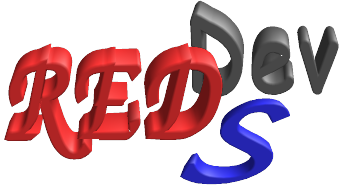

The LEaP program (from the AmberTools) recognizes the prep, off, mol2 and mol3 file formats, which are used to describe FF libraries. Compared to the prep and off file formats, which are specific to LEaP, the mol2 file format presents the advantages to be recognized by many graphical programs, and the mol3 file format, defined for the PyRED program, is an extension of the mol2 file format with additional pieces of information related to the connections between molecular fragments.
The FF libraries are designed following empirical rules (molecular topology definition, atom naming, atom typing, atomic charges and charge equivalencing). Thus this is always a good idea to review each FF library (check the atom types and charge equivalencing), and rerun the job if modifications have to done using dedicated keywords. See below for pieces of information found in a FF library:
-1- Atom names
-2- Chemical elements
-3- Cartesian coordinates
-4- Molecular topology
-5- Atom types
-6- Atomic/partial charges
-7- Molecular fragment definition
-1- ATOM NAMES
See the second column in the '<TRIPOS@>ATOM' section in the mol2/mol3 files...
- The atom names in a FF library can be displayed within a Jmol applet by clicking on the 'Name' button (see 'Atom labels').
- See the pieces of information about the atom names in the PyRED input file(s) description.
- Chemical elements are not defined in the mol2/mol3 file formats. They are deduced from the atom types, where the 'atom type ↔ chemical element' correspondence is defined in the 'frcmod.know' file by the LEaP program.
See the third, fourth and fifth columns in the '<TRIPOS@>ATOM' section in the mol2/mol3 files...
- The Cartesian coordinates in a FF library do not matter (any values can be used as X, Y and Z) as a FF library is compatible with the different orientations and conformations of a molecule or with the different snapshots of a MD trajectory.
See the '<TRIPOS@>BOND' section in the mol2/mol3 files...
- A FF library generated by PyRED only contains single bonds, which strictly represent the molecular topology (i. e. the molecule skeleton) to be implemented in the generated FF.
- In an empirical FF single, double and triple bonds are only differentiated by FF constant values defined between pairs of atom types (see the 'frcmod.known' file). Thus, setting double and triple bonds in a FF library is useless from a FF point of view: double and triple bonds are simply calculated/displayed within a Jmol applet for the visualization of a mol2/mol3 file and for the human being convenience.
- The molecular topology is defined using simple rules, and is based on atom radii internally stored in PyRED; see the PyRED input file(s) description.
- For each bond present in a FF library a FF bond constant has to be defined in the 'frcmod.know' file (along with other FF parameters).
See the sixth column in the '<TRIPOS@>ATOM' section in the mol2/mol3 files...
- The atom types in a FF library can be displayed within a Jmol applet by clicking on the 'Type' button (see 'Atom labels').
- If the atom types determined by PyRED are not these wanted, the atom types generated in a FF library can be modified by using the MOLECULE'n'-ATMTYPE keyword ('n': molecule index; use the atom order defined in the PDB input file) in the 'Project.config' file.
- Each atom type found in a FF library has to be listed in the 'frcmod.known' file.
- An atom type generally consists of one or two alphanumeric characters. Special characters, such as the asterisk (*), may also be used. PyRED also handles atom types with three alphanumeric characters. In that case, check whether the MD software used supports three-character atom types.
- Lower case atom types are used by GAFF, while GLYCAM/Amber FF utilizes upper case atom types. Generally one does not mix lower and upper case atom types in a molecule.
See the ninth column in the '<TRIPOS@>ATOM' section in the mol2/mol3 files...
- The atomic (or partial) charges in a FF library can be displayed within a Jmol applet by clicking on the 'Charge' button (see 'Atom labels').
- The atomic charges of chemically equivalent atoms have to be made equivalent for MD simulations: this is achieved during the charge derivation step. The algorithm developed in PyRED for charge equivalencing is robust. However, charge equivalencing can be affected by using the MOLECULE'n'-CHEMEQSM/CHEMEQIA/CHEMEQMM keywords ('n': molecule index; use the atom order defined in the PDB input file) in the 'Project.config' file.
- For a partial charge value the number of digits used after the decimal point is defined using the COR_CHR keyword in the System.config file (4 is the default in Amber FF).
- The set of partial charge values present in a FF library is that generated by the latest RESP stage of the chosen charge derivation procedure; i. e. see the punch'z'-'xx'_m'n'.dat output file; 'z' = 0, 1 or 2; 'n' is the input molecule index; 'xx' = sm (single molecule), ia (single molecule with intra-molecular charge constraint) or mm (multiple molecule); and the RESP input and output files.
See the '<TRIPOS@>HEADTAIL' section in the mol3 file...
- Defining the head and the tail of a molecular fragment allows connecting it with other fragments as defined in the LEaP program.
- The head and tail of a molecular fragment can be modified by using the MOLECULE'n'-MOL3HEAD keyword ('n': molecule index) in the 'Project.config' file.
